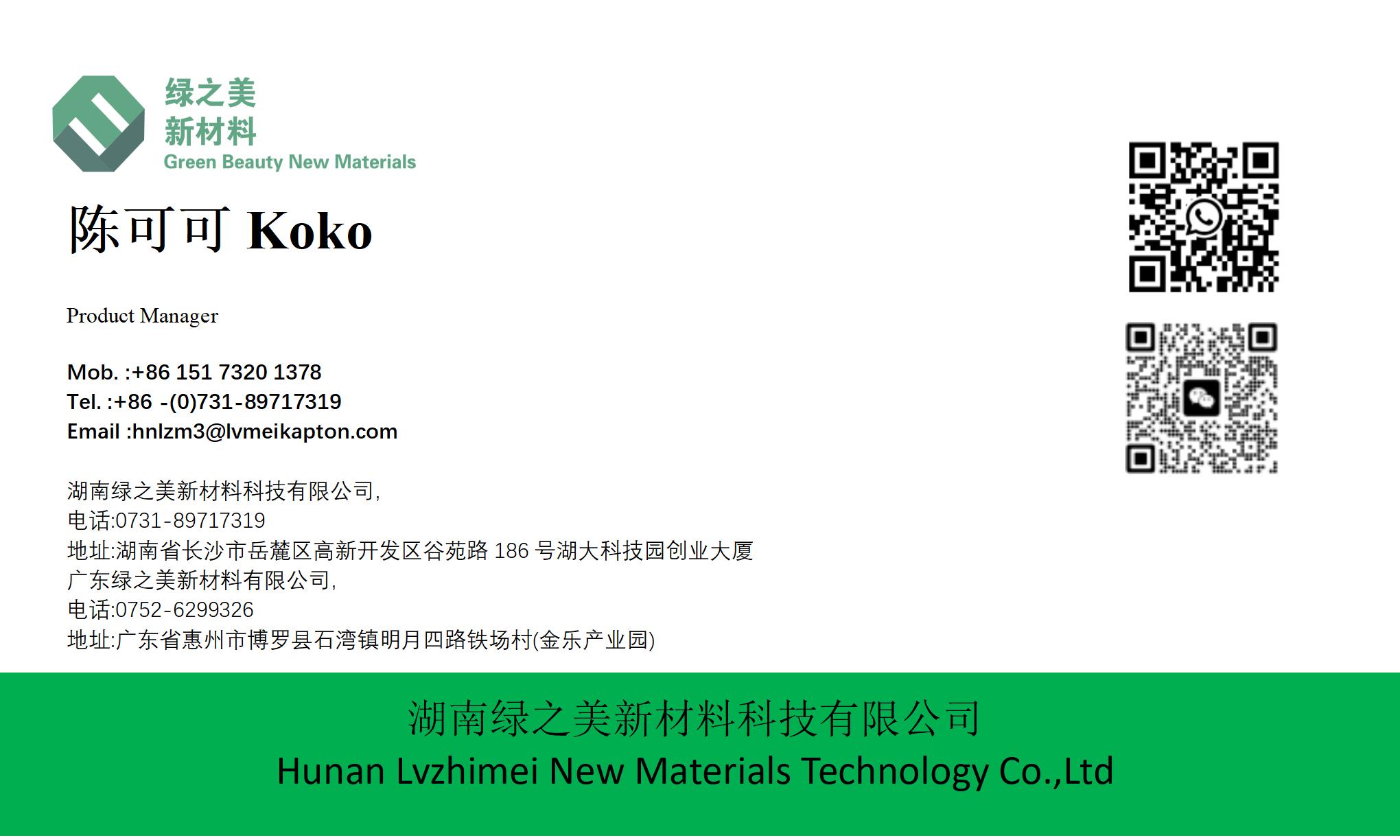hnlzm@lvmeikapton.com
+86 13787123465


Hunan Lvzhimei New Material Technology Co., Ltd.


NameDescriptionContent
When to Use Brown Circuit Board High Temperature Tape in Electronics Repair | https://www.lvmeikapton.com/
Source:
|
Author:Koko Chan
|
Published time: 2025-04-29
|
105 Views
|
Share:
In the ever-evolving electronics industry, ensuring component reliability and longevity is paramount. Brown circuit board high temperature tape, often made from polyimide (PI) or modified PET materials, plays a crucial role in protecting circuit boards during repair processes and high-temperature environments. This guide delves into the optimal scenarios for deploying this tape, addressing challenges such as thermal shock resistance, solder mask protection, and gold finger reinforcement.
When to Use Brown Circuit Board High Temperature Tape in Electronics RepairA Comprehensive Guide for Technicians and Engineers
Introduction
In the ever-evolving electronics industry, ensuring component reliability and longevity is paramount. Brown circuit board high temperature tape, often made from polyimide (PI) or modified PET materials, plays a crucial role in protecting circuit boards during repair processes and high-temperature environments. This guide delves into the optimal scenarios for deploying this tape, addressing challenges such as thermal shock resistance, solder mask protection, and gold finger reinforcement.
Core Applications: When Brown Tape Shines
1. Wave Soldering ProtectionDuring wave soldering (a process involving molten solder at 250-280°C), components and traces are vulnerable to thermal damage. Brown PI tape (rated up to 300°C) is ideal for:
●
Covering gold finger contacts to prevent oxidation.
●
Shielding delicate components from solder bridging.
●
Maintaining solder mask integrity by resisting thermal degradation.
Table 1: Tape Performance Comparison
Material | Max Temp | Key Features | Common Uses |
PI Tape | 300°C | High insulation, anti-oxidation | Wave soldering, long-term protection |
PET Tape | 200°C | Adhesive residue-free | Temporary fixes, masking |
Teflon | 260°C | Chemical resistance | Cable insulation |
2. Gold Finger ReinforcementGold-plated connectors (common in memory modules, connectors) degrade under repeated thermal cycling. Applying brown tape:
●
Reduces stress on contacts during thermal expansion/contraction.
●
Acts as a barrier against corrosive gases (e.g., H₂S in industrial environments).
●
Enhances mechanical stability for high-vibration applications.
3. Temporary Fixes & Diagnostic TestingSelf-adhesive PET variants (e.g., 3M 7413D) offer advantages for:
●
Rapid repairs without permanent bonding (e.g., bridging broken traces).
●
Masking specific areas during reflow oven testing.
●
Removing cleanly post-inspection, avoiding residue-related failures.
4. Dual Protection with Spray CoatingsCombining brown tape with blocking spray paints (e.g., acrylic-based coatings) creates a synergistic shield:
●
Tape provides initial thermal insulation.
●
Paint reinforces resistance against solvents, UV, and abrasion.
●
Ideal for outdoor electronics (e.g., solar panels, automotive ECUs).
Technical Challenges & Solutions
1. Thermal Shock ResistanceAbrupt temperature shifts (e.g., -40°C to 150°C in automotive environments) can crack solder joints. Brown tape’s flexibility (e.g., PI’s elongation up to 50%) absorbs thermal stress. Key strategies:
●
Apply tape in a zigzag pattern over stress-prone areas.
●
Use tapes with silicone adhesive for improved thermal conductivity.
2. Solder Mask PreservationSolder masks (epoxy layers) degrade above 180°C, leading to circuit exposure. Tape application tips:
●
Wrap components’ edges to prevent mask chipping during rework.
●
Select tapes with low adhesive tack to avoid peeling damage.
3. Gold Finger Oxidation PreventionOxidized contacts result in poor signal transmission. PI tape’s inertness and high dielectric strength (up to 100kV/mm) ensure:
●
Total coverage during wave soldering.
●
Long-term protection in humid conditions.
Practical Tips for Efficient Deployment
1.
Preparation Checklist:
○
Clean board surfaces with isopropyl alcohol to ensure adhesion.
○
Use a heat gun (150°C) to pre-shrink tape edges for smooth wrapping.
○
Mark tape application zones with UV ink to align components.
2.
Wave Soldering Protocol:
○
Apply tape 2mm beyond contact edges to avoid solder overflow.
○
Secure tape with stainless steel fixtures to prevent slippage.
○
Post-soldering: cool boards to 80°C before removing tape to prevent adhesive bleed.
3.
Troubleshooting Common Errors:
○
Residue Issues: Use PET tape for temporary fixes; PI tape requires solvent cleaning if residue occurs.
○
Tape Delamination: Check for surface contaminants or insufficient heat curing (PI tape needs 260°C/10 mins).
Industry Trends & Future Prospects
1. 5G Infrastructure Driving DemandAs 5G networks expand, connectors and PCBs face higher thermal loads. Brown tapes with:
●
Enhanced thermal conductivity (e.g., graphene-infused PI variants).
●
Miniaturization-friendly thin profiles (≤0.05mm).
Are gaining traction in base station equipment.
2. Automotive Electronics EvolutionElectric vehicles demand tapes certified for ISO 16750 (automotive thermal stress). Innovations include:
●
Brown tapes with EMI shielding properties.
●
Adhesives resistant to battery acid fumes.
3. Sustainability ShiftIndustry leaders are developing recyclable PET tapes with:
●
Water-based adhesives (reducing VOC emissions).
●
100% post-consumer recycled film substrates.
Conclusion
Brown circuit board high temperature tape is a versatile tool in electronics repair, offering protection against thermal, chemical, and mechanical stresses. By understanding its unique properties and application nuances, technicians can significantly enhance board reliability, extend component lifespans, and adapt to emerging industry demands. As technology evolves, tapes with integrated sensing capabilities (e.g., thermal monitoring layers) may further revolutionize the field.



Hunan Lvzhimei New Material Technology Co., Ltd.
Quick Links
Product Categories
© 2024 Hunan Lvzhimei New Material Technology Co., Ltd.All Rights Reserved. Designed by Erge
0731 - 89717319
hnlzm@lvmeikapton.com
+86 13787123465
Room 502, Chuangye Building, No186, Guyuan Road, High-Tech District, Changsha, Hunan, China
CONTACT



